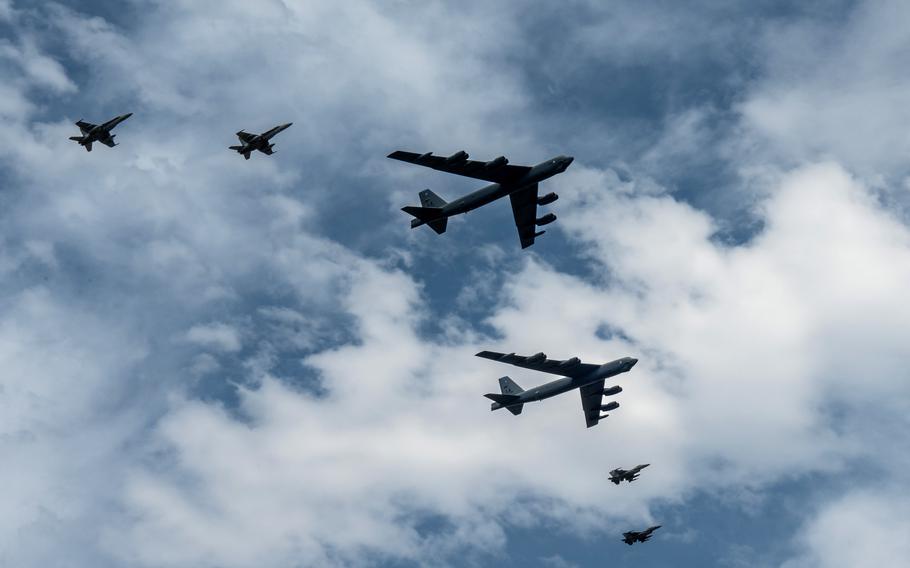
Two B-52H Stratofortresses from Barksdale Air Force Base, La., fly in formation with fighter jets from Romania and Finland as they arrive at Mihail Kogalniceanu Air Base, Romania, on July 21, 2024. Earlier in the day, the B-52s were intercepted by two Russian aircraft over the Barents Sea. (Seth Watson/U.S. Air Force)
STUTTGART, Germany — Two U.S. Air Force long-range bombers that had a close encounter over the weekend with Russian fighters over the Barents Sea landed at an allied base near the Black Sea hours later, according to the service.
The arrival of the B-52H Stratofortress bombers at Romania’s Mihail Kogalniceanu Air Base on Sunday marks the first time U.S. strategic bombers have operated from the installation, U.S. Air Forces Europe and Africa said the same day.
The base, known as MK to forces deployed there, serves as the main operational hub for the U.S. military in the Black Sea region. It is undergoing a multibillion-dollar expansion by NATO that will make it larger than even Ramstein Air Base in Germany.
Earlier in the day, the bombers were intercepted more than 1,000 miles away by Russian fighters over the Barents Sea on a preplanned mission that involved coordination with NATO fighter planes, USAFE-AF said.
“The U.S. aircraft did not change course due to the intercept and continued along their scheduled flight plan without incident,” USAFE said.
The B-52s, assigned to the 2nd Bomb Wing at Barksdale Air Force Base in Louisiana, are in Europe in connection with the Air Force’s ongoing bomber task force missions, which involve short-term deployments to the Continent.
“Through collaborative efforts with our allies, the U.S. enables our forces to combat current and future threats,” USAFE-AF commander Gen. James Hecker said in a statement.
In Europe, encounters between allied and Russian aircraft are relatively commonplace. In most cases, intercepts occur over international airspace without incident.
However, allies on occasion have accused Russia of crossing into their airspace. In June, Finland said four Russian military aircraft crossed into its airspace for several minutes.
Other aerial confrontations have risked potential escalation between Russia and the U.S. military, such as when a Russian fighter in March 2023 collided with a U.S. drone over the Black Sea, forcing the unmanned aircraft to crash into international waters.